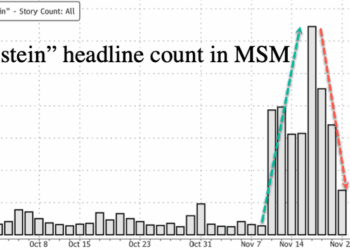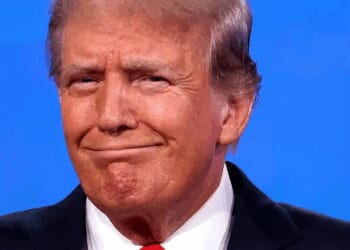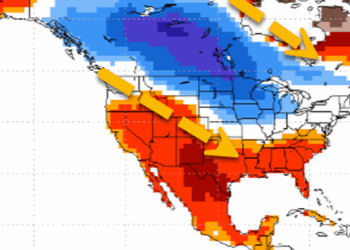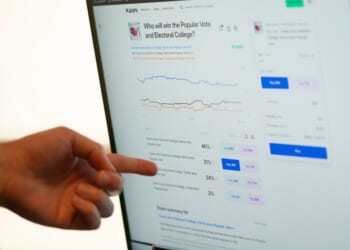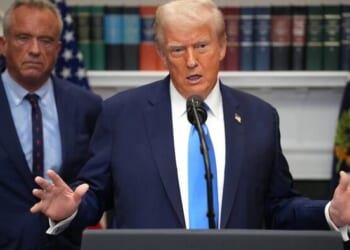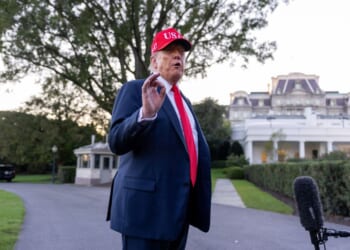Submitted by Thomas Kolbe
The United States is waging a desperate fight against the killer drug fentanyl. Beyond Chinese producers and Mexican drug cartels, the northern neighbor Canada has now come under the American government’s scrutiny. The U.S. finds itself caught in a vise of drug money and asymmetric warfare.
In recent weeks, the U.S. Coast Guard made headlines with two spectacular operations: On September 2, 2025, the U.S. Navy sank a suspected Venezuelan drug boat in the southern Caribbean – according to President Trump, a speedboat operation by a “narco-terrorist” group. Eleven people on board died.
The latest incident occurred on October 3, 2025: another boat was destroyed near the Venezuelan coast, four people killed, large quantities of drugs seized. Two events that highlight a topic that has nearly been drowned out by customs policy noise, the Gaza war, and government shutdowns – the fentanyl epidemic, America’s silent war on the home front.
Echoes of the Opium Wars
The fentanyl crisis in the U.S. has taken monstrous proportions in recent years – documented in countless shocking videos of literally zombified streets in the country’s drug capitals such as Los Angeles or Philadelphia.
Approximately 110,000 people die annually from drug use. Around 75,000 deaths – nearly 200 per day – are attributed to the killer drug.
Fentanyl is a synthetic opioid, roughly 50 times stronger than heroin and 100 times more potent than morphine. Even tiny amounts can be lethal, making it the global fuel of a new drug epidemic – cheap to produce, easy to smuggle, deadly. Its characteristics make it an ideal instrument to undermine an external enemy from within and disrupt parts of their social fabric.
As during the Opium Wars of the 19th century – when British opium was used as a geostrategic weapon in the struggle for trade surpluses against China, and Beijing’s resistance was exploited by Western powers to escalate – today’s situation feels like a replay: instead of sailing ships, containers transport industrial precursor chemicals; instead of colonial ambitions, geopolitical interests play a decisive role.
President Trump does not mince words in this conflict and already commented on the situation in February: “The continued supply of synthetic opioids has profound consequences for our nation, including the deaths of about 200 Americans per day. The Chinese Communist Party subsidizes and supports Chinese chemical companies that export fentanyl and precursor chemicals, which are sold to manufacture synthetic opioids illegally trafficked in the U.S.”
Geopolitical Dynamite
These are unmistakable words from the U.S. president. They cast Washington’s harsh trade policy in a new light: this is not merely economic power politics. It is undeniably a response to an industrially organized drug war, whose raw materials – according to allegations – originate in China, pass through Mexico, and ultimately flood American streets as a deadly final product.
Following Trump’s argument, a chilling picture emerges: the state-sponsored Chinese export model implies a diabolical, geopolitically aggressive strategy, coldly calculated and orchestrated by a system that combines economic power with lethal effect.
Against this backdrop, U.S. tariffs on China seem almost restrained – as if Washington wants to lull the opponent into a false sense of security before the big strike.
Shift of Focus to Canada
Looking north, at the Canadian border: journalist Sam Cooper recently highlighted in an interview that Canada has become a money-laundering hub for Chinese and Mexican drug cartels over the years.
He refers to the so-called Vancouver model, which in four years facilitated cumulative money laundering from U.S. drug trade exceeding $300 billion. Cooper criticizes the Canadian legislature for failing to effectively deploy the rule of law against these cartels. Moreover, the country has itself become a net producer of fentanyl, with Vancouver as a central hub of activity.
Here too, President Donald Trump is intensifying measures and directly linking a tough trade policy against Canada with the fentanyl crisis. Trump repeatedly hints that parts of Canada – especially the resource-rich province of Alberta – could one day switch sides and possibly become a new U.S. state – a provocation sending a clear message: we know what you are doing. And we will not yield without a fight.
The Enemy in the North
Canada appears in this light as a hostile state to the north of the United States, installed by the British after the lost War of Independence in 1776. Here again are the protagonists of the 19th-century Opium Wars.
Canada remains part of the Commonwealth of Nations and is formally represented by the English crown. A particularly curious case is the appointment of current Prime Minister Mark Carney: holding both British and Canadian citizenship, he was previously Governor of the Bank of England – an institution acting as a sort of clearinghouse for the City of London, one of the central players on the global financial chessboard.
In general, Carney is a problematic case. Like Mario Draghi (2021), Boris Johnson (2019), Rishi Sunak (2022), and Keir Starmer, he was selected through an obscure, democratically unaccountable process and placed in parliament as prime minister.
The divide between the new, conservative-patriotic, market-oriented U.S. government on one side, and the increasingly paternalistic-centralist forces of London and Brussels on the other, is widening politically and administratively.
Carney’s repeated alignment with European interests makes clear where the geopolitical front lies.
Both Europe and Canada should brace for further harsh responses in trade disputes with Washington. Provocations like the EU digital surveillance or the questionable punishment of American companies under the Digital Services Act will be met with direct sanctions.
Strategy Unfolded
While U.S. President Trump, on the foreign policy front, aims to cut off the sources of the drug war against the U.S. with clear messaging and tough tariffs, the White House also pursues a classic domestic strategy to tackle the fentanyl crisis. In July 2025, Trump signed the “HALT Fentanyl Act,” permanently classifying fentanyl and related substances as Schedule I drugs. The law mandates minimum sentences of ten years for possession of 100 grams or more.
Additionally, the administration tightened visa restrictions for suspected drug traffickers and their networks and is massively expanding border controls. Foreign policy-wise, Trump imposed punitive tariffs on China, Canada, and Mexico to pressure the main source countries, always with the unmistakable note of their role in the drug conflict.
Despite initial declines in death numbers, the fight remains complex: local resistance from radicalized leftists, alternative smuggling routes, and international entanglements require a multidimensional approach. Trump’s policy combines law enforcement, border security, and geopolitical pressure as the central pillars in the war against this epidemic.
The fact that Americans are now deploying heavy weaponry in their fight against the drug war – as in the Venezuelan boat case where military force was used – sends an unmistakable signal. Washington is taking the reins decisively and resolutely. The era in which external forces could destabilize the United States without major pushback is definitively over.
* * *
About the author: Thomas Kolbe, a German graduate economist, has worked for over 25 years as a journalist and media producer for clients from various industries and business associations. As a publicist, he focuses on economic processes and observes geopolitical events from the perspective of the capital markets. His publications follow a philosophy that focuses on the individual and their right to self-determination.
Loading recommendations…


